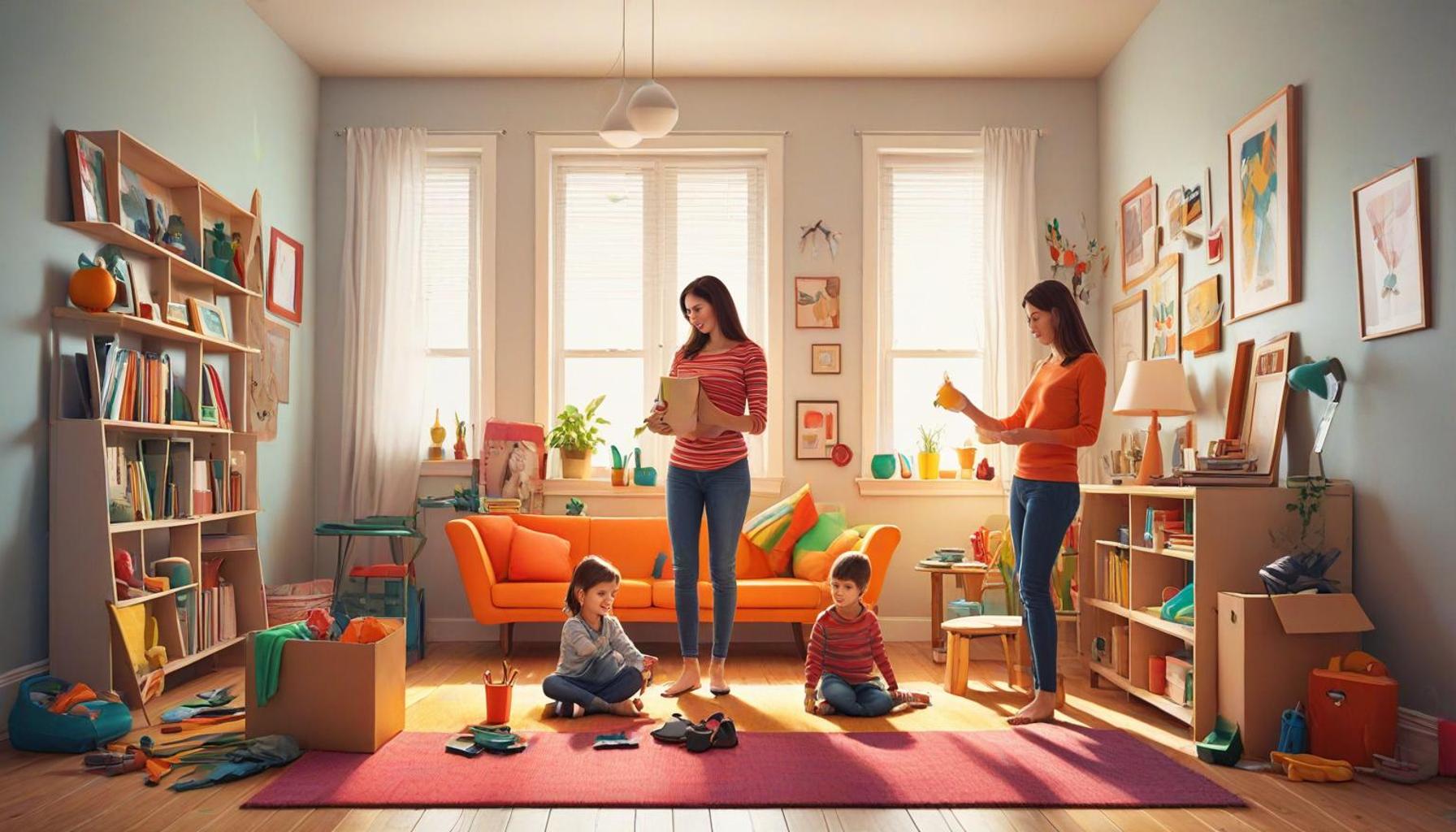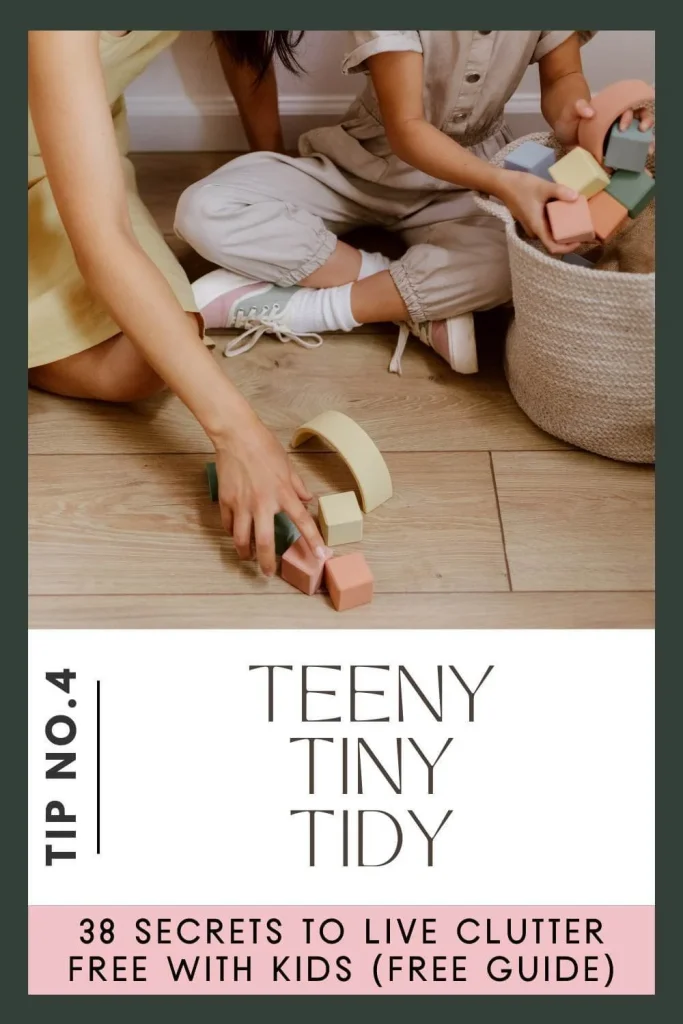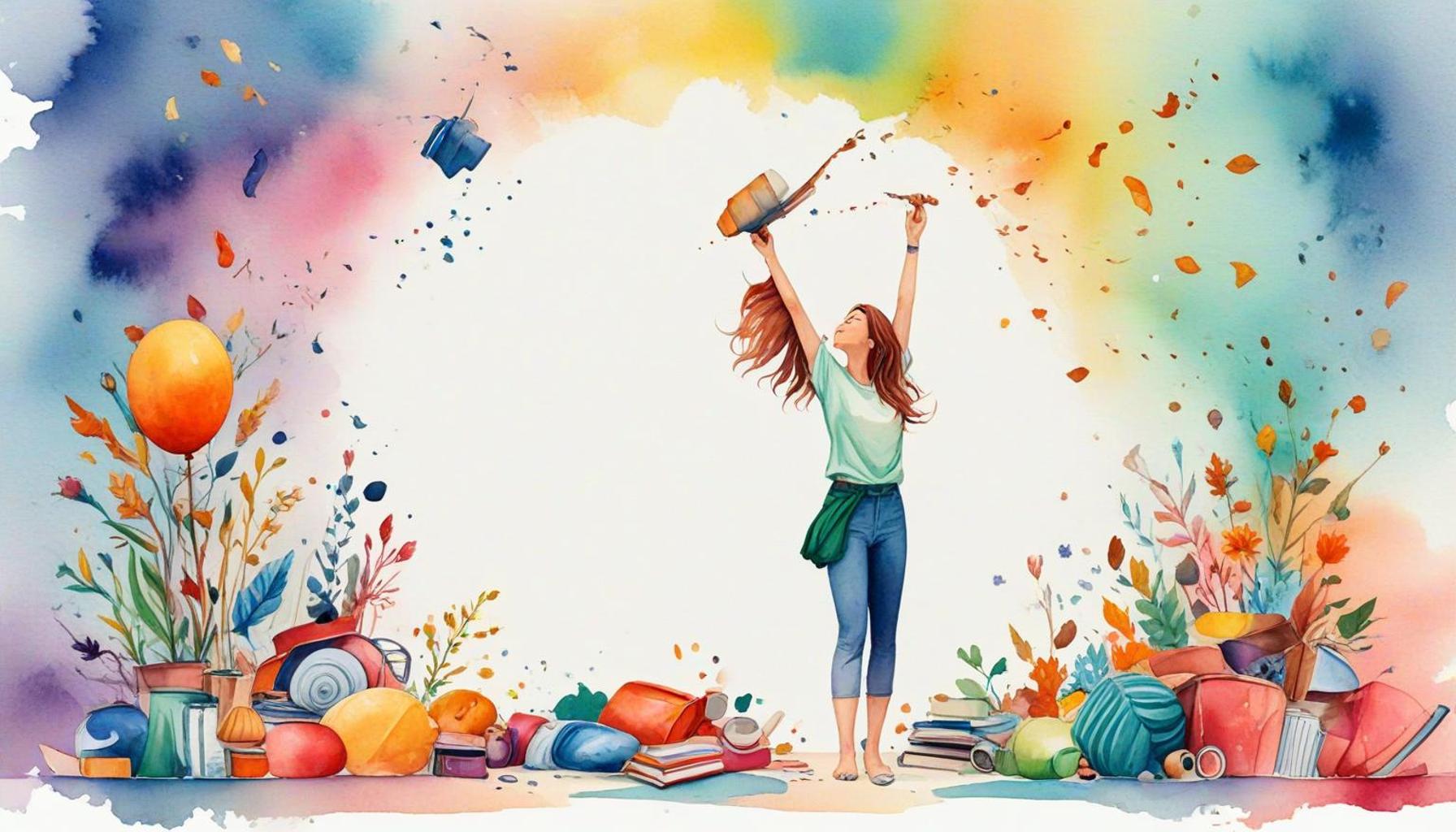Family Minimalism: Strategies for Involving Children in Reducing Clutter

Embracing Minimalism as a Family
In a world saturated with possessions, finding harmony through family minimalism can be transformative. The journey towards a clutter-free home isn’t solely a task for adults; children can play a pivotal role in this shift. Engaging kids in the decluttering process fosters awareness and responsibility towards their belongings, setting the stage for a lifestyle rooted in intentional living.
Benefits of Involving Children
When children participate in reducing clutter, they gain valuable life skills, including:
- Decision-making: Filtering through their toys, clothes, and other belongings encourages kids to understand what to keep and what to let go. For instance, when faced with a pile of toys, children learn to evaluate their emotional attachment to items and make thoughtful decisions.
- Appreciation of space: A clean, organized environment often leads to enhanced creativity and focus. Children can realize how a spacious area allows for more play or study time, fostering an appreciation for simplicity.
- Sense of responsibility: As kids take ownership of their personal items, they develop accountability. For example, by committing to keep their room tidy, they learn the importance of maintaining their space, reinforcing the value of minimalism.
By introducing minimalism as a family value, you can cultivate a lifestyle that emphasizes quality over quantity. Children learn that less can be more, leading to an environment where emotional and physical well-being thrives. Their active involvement in the decluttering process can generate a sense of pride in their space, fostering autonomy and confidence.
Strategies for Involvement
Here are some innovative approaches to integrate children into the decluttering journey:
- Fun sorting games: Transforming organizing into an enjoyable activity can lighten the mood. For example, setting a timer and racing to see who can sort their toys into “keep,” “donate,” or “recycle” piles first can bring excitement to the process.
- Goal-setting: Create family objectives for reducing clutter together. Setting a target, such as decluttering one room each month, encourages teamwork and accountability among family members.
- DIY donation projects: Encourage compassion through giving. Involve kids in selecting items to donate and explain how their choices help others, perhaps by visiting a local charity center to witness the impact firsthand.
Ultimately, fostering a sense of minimalism in children not only cultivates responsible individuals but also helps create future generations that prioritize simplicity and intentional living. The process might take time, but the shared experiences and the joy of a decluttered home can be incredible. Embracing minimalism as a family strengthens bonds while promoting a peaceful, organized lifestyle that resonates well beyond childhood.

DISCOVER MORE: Click here to unlock new insights
Strategies for Involving Children in Decluttering
In a society where consumerism often overshadows the pursuit of simplicity, introducing the concept of family minimalism can benefit not just adults, but children significantly as well. To actively engage kids in the process of reducing clutter, families can implement a variety of fun and effective strategies that resonate with children of all ages. These methods promote teamwork, creativity, and a sense of achievement, turning an otherwise mundane task into a joyous family activity.
Creating a Collaborative Atmosphere
One of the key approaches to involving children in decluttering is to create a collaborative and inclusive environment. Children are more likely to participate enthusiastically when they feel their input is valued. Here are some strategies to foster collaboration:
- Family Meetings: Regular family meetings focused on decluttering goals can set the stage for teamwork. Discuss what items are no longer used, and encourage children to share their thoughts on what to keep or donate. This inclusion empowers children and gives them a sense of ownership over their space.
- Personalized Decluttering Tasks: Tailor decluttering tasks to suit each child’s interests. For instance, if a child is passionate about art, encourage them to sort through art supplies, deciding what to keep and what can be recycled or donated. This personalization can make the process feel less daunting.
- Declutter Together: Make decluttering a family affair by designating a specific weekend to tackle a designated area of the home. Play upbeat music, set small breaks for snacks, and turn the task into an enjoyable shared experience. The collective effort cultivates a sense of accomplishment when the task is completed.
Moreover, teaching children about the broader implications of their involvement can promote a deeper understanding of the value of minimalism. For example, explaining how reducing clutter not only benefits their own living space but also positively impacts the environment can inspire children to embrace the concept more fully. Research suggests that children who are involved in decluttering at a young age often develop lifelong habits that prioritize sustainability and mindfulness.
Utilizing Visual Aids
Visual aids can play a crucial role in engaging children during the decluttering process. Children often respond well to imagery, which can help them understand concepts better. Here are a few ways to incorporate visual elements:
- Before and After Photos: Capture the space before and after decluttering sessions, showcasing the transformation. Children can take pride in visual proof of their efforts, reinforcing the impact of their participation.
- Charts and Checklists: Utilize charts or checklists that outline decluttering tasks or goals. Children can mark off completed items, providing a sense of accomplishment that motivates them to continue.
- Color Coding: Assign different colors for keeping, donating, or recycling items. This visual distinction can simplify the decision-making process and make it more engaging for younger children.
Integrating visual aids can make the decluttering journey more interactive and stimulate children’s interest, ultimately fostering a deeper commitment to minimalism within the family unit. By adapting these approaches, families can cultivate a shared passion for simplicity, ensuring that the principles of family minimalism are understood and respected by all members.
Engaging Children in the Clutter Reduction Process
When embarking on the journey of family minimalism, it’s crucial to involve children actively in the process of decluttering. This not only empowers them but also instills valuable life skills. By teaching children the importance of living with less, families can foster a more conscious approach to possessions. Here are some effective strategies to involve your children:
1. Create a Family Decluttering Day
Set aside a day each month dedicated to decluttering as a family. Turn it into a fun and enjoyable event by playing music, making it a competition, or rewarding children afterward with a small treat. This makes the process less of a chore and more of a family bonding experience.
2. Implement the One-In, One-Out Rule
Encourage children to understand the concept of “one in, one out.” This means for every new toy or item they receive, one must be donated or discarded. This simple rule teaches them to value the things they already have while also practicing generosity.
Benefits of Involving Children
Involving children in reducing clutter can lead to several intrinsic benefits. According to studies, children who participate in household decision-making develop a stronger sense of responsibility and self-efficacy. They learn the tangible consequences of consumerism at an early age, leading to more sustainable habits in adulthood.Additionally, allowing children to choose what to keep or let go of fosters a sense of ownership over their spaces. This can lead to them being more organized and respectful of their belongings. Thus, minimalism becomes not just a family goal but a personal ethos instilled in the next generation.
3. Use Educational Tools
Incorporate educational resources such as books or workshops about minimalism and environmental sustainability. These can help illustrate the value of mindfulness regarding possessions, sparking meaningful conversations about consumer habits and waste.Furthermore, creating visual reminders can be helpful. Consider making charts where children can track their decluttering progress or design fun art projects with decluttered items, thus encouraging creativity while promoting minimalism.By integrating these strategies into family life, you’ll not only reduce clutter but also lay the groundwork for lifelong values of simplicity and mindfulness. This approach helps ensure that children feel heard and involved, creating an environment where everyone contributes toward a more organized and peaceful home. The journey towards minimalism is not merely about decluttering—it’s about building a legacy of thoughtful consumption and emotional well-being.
DIVE DEEPER: Click here to discover how minimalism can transform your life
Encouraging Emotional Connections
One critical aspect of decluttering is addressing the emotional attachments that children often have with their belongings. Encouraging children to recognize these feelings can not only help them declutter but also foster emotional maturity. Here are some effective strategies to guide children in this area:
- Memory Boxes: Create memory boxes for each child where they can store a selection of items that hold special significance to them. This allows children to choose what matters most, helping them learn to prioritize while still honoring their emotional connections.
- Storytelling Sessions: During decluttering, have children share stories associated with certain items. This practice can help them understand why they hold onto things and can even lead to the realization that they no longer need those items. By talking about memories, children may find it easier to let go of things that were once meaningful but are no longer relevant.
- Feelings Charts: Use feelings charts to help children visually express their emotions about their belongings. This can aid them in recognizing whether they feel joy, guilt, or indifference toward certain items, making the decision to keep or donate easier and more meaningful.
By encouraging children to engage emotionally with their belongings, families can make decluttering a holistic experience, turning it into a lesson about cherishing memories while learning the importance of space and simplicity.
Games and Challenges
Innovating decluttering into games or challenges can captivate children’s interest and encourage them to participate actively. Turning the process into a playful experience can lead to enthusiastic involvement and a deeper understanding of minimalism. Here are some fun ideas to incorporate:
- Decluttering Race: Organize a timed decluttering race where family members compete to see who can declutter the most items in a specific area. This not only adds a competitive element but also emphasizes teamwork when they come together to tackle the clutter.
- Item Collection Challenges: Set specific challenges, such as collecting 10 items to donate within a week. Reward achievements with small prizes or extra playtime, which serves as motivation for children to engage in cleaning up.
- Declutter Bingo: Create Bingo cards featuring various decluttering tasks, such as “remove 5 toys” or “sort through books.” Completing a row can lead to rewards that encourage participants to tackle multiple tasks joyfully.
These playful approaches provide a motivating framework for decluttering, emphasizing the idea that reducing clutter can be both enjoyable and fulfilling.
Connecting Minimalism with Daily Life
In order to further embed the principles of family minimalism into children’s lives, it can be beneficial to demonstrate how minimalism aligns with everyday activities. Here’s how you can illustrate those connections:
- Mindful Consumption: Teach children to be mindful of what they bring into the home. When shopping, involve them in discussions about the necessity of items and encourage them to ask questions like, “Do we really need this?” or “Where will we put it?” to foster critical thinking about their purchases.
- Seasonal Decluttering Rituals: Introduce seasonal decluttering rituals, such as spring cleaning or before holidays, aligning with natural cycles. This habit reinforces the concept of continual evaluation while showing that it’s normal to reassess belongings regularly.
- Community Involvement: Engage in community events such as clothing drives or food banks where children can see the impact of their decluttering efforts on others. This provides a meaningful context, empowering children to appreciate the importance of sharing and helping their communities.
By seamlessly weaving minimalism into daily life, families can cultivate a lifestyle that transcends superficial decluttering, allowing children to adopt these principles as core values that last a lifetime.
DISCOVER MORE: Click here to transform your space and your mind
Conclusion
Adopting family minimalism provides a unique opportunity for parents to guide their children through the essential lessons of letting go and prioritizing what truly matters. By implementing engaging strategies such as memory boxes, storytelling sessions, and playful decluttering games, families can make the process not only educational but also enjoyable. These approaches forge emotional connections between children and their belongings, helping them recognize significance while cultivating values that will last a lifetime.
Moreover, by linking minimalism with mindful consumption and community involvement, families can reinforce the importance of thoughtful decision-making each day. As children learn to navigate their environment through a minimalist lens, they develop critical thinking skills, empathy, and a sense of responsibility towards both their possessions and others. This holistic experience serves to deepen their understanding of the benefits of a clutter-free life, enhancing overall well-being.
Ultimately, reducing clutter is not merely about creating space; it’s about fostering connections, nurturing resilience, and preparing children for a life where simplicity means freedom. Embracing family minimalism transforms clutter reduction into a meaningful journey, one that not only declutters the home but also enriches the familial bond and cultivates a more mindful way of living. Families are encouraged to embrace the joy of a less-is-more philosophy, creating rooms filled with cherished memories rather than unnecessary items.


